Search
- Page Path
-
- HOME
- Search
- Review Article
- Allergy
- Moderate to severe atopic dermatitis in children: focus on systemic Th2 cytokine receptor antagonists and Janus kinase inhibitors
- Jeong Hee Kim, Mona Salem Samra
- Clin Exp Pediatr. 2024;67(2):64-79. Published online June 14, 2023
-
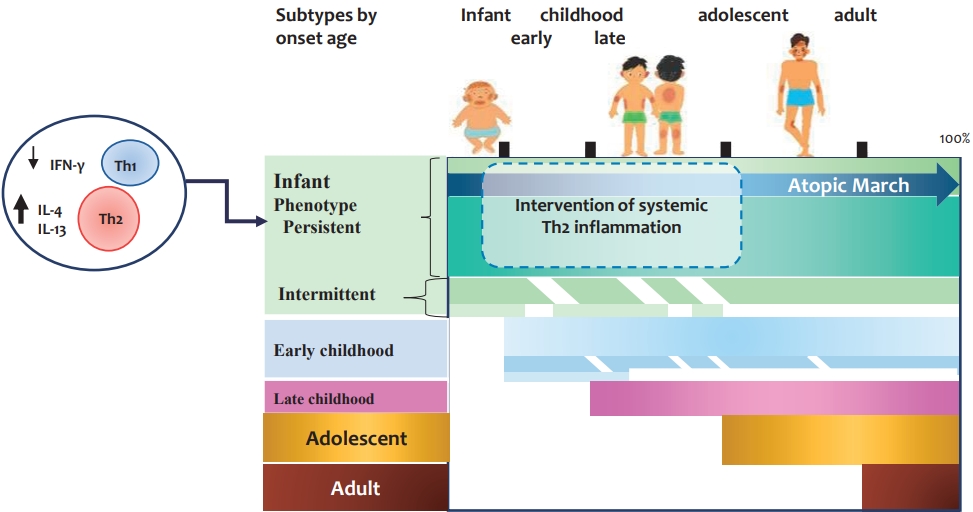
· Atopic dermatitis (AD) is characterized by a strong T helper (Th)2 response, although the extents of Th22, Th17/ interleukin (IL)-23, and Th1 responses vary among disease subtypes.
· Children with moderate to severe AD may require early systemic therapy to reduce the systemic inflammation caused by increased Th2 cytokine levels.
· Dupilumab, which blocks IL-4/IL-13 receptor, has equivalent efficacy for extrinsic and intrinsic AD and a favorable safety profile in infants and children aged 6 months and older.
- Skin and oral intervention for food allergy prevention based on the dual allergen exposure hypothesis
- Kiwako Yamamoto-Hanada, Yukihiro Ohya
-
Early-onset atopic dermatitis increases the risk of food allergies, suggesting that transcutaneous sensitization may occur through inflamed skin. Regarding food allergy causation, the dual allergen exposure hypothesis proposes that oral-route allergen exposure leads to immune tolerance, whereas allergen exposure via the inflamed skin causes food allergy. This hypothesis implies that it is important to induce oral immune tolerance and prevent... -
DOI: https://doi.org/10.3345/cep.2023.00045 [Accepted]
- Original Article
- Allergy
- Influence of age at complementary food introduction on the development of asthma and atopic dermatitis in Korean children aged 1–3 years
- Jihyun Lee, Meeyong Shin, Bora Lee
- Clin Exp Pediatr. 2021;64(8):408-414. Published online November 1, 2020
-
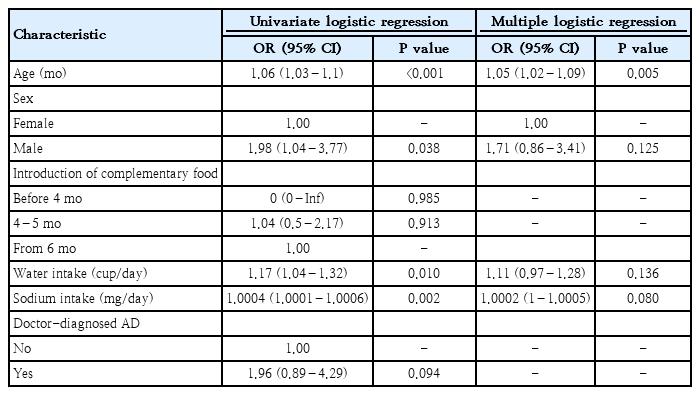
Question: Is age at the time of complementary food introduction associated with asthma and atopic dermatitis (AD) in early childhood?
Finding: We found no significant association between age at the time of complementary food introduction and the incidence of AD and asthma in Koreans aged 1–3 years.
Meaning: Our findings suggest that the influence of individual allergenic foods on the development of AD and asthma should be clarified.
- Ten-year trends and prevalence of asthma, allergic rhinitis, and atopic dermatitis among the Korean population, 2008–2017
- Jihyun Ha, Seung Won Lee, Dong Keon Yon
- Clin Exp Pediatr. 2020;63(7):278-283. Published online January 29, 2020
-
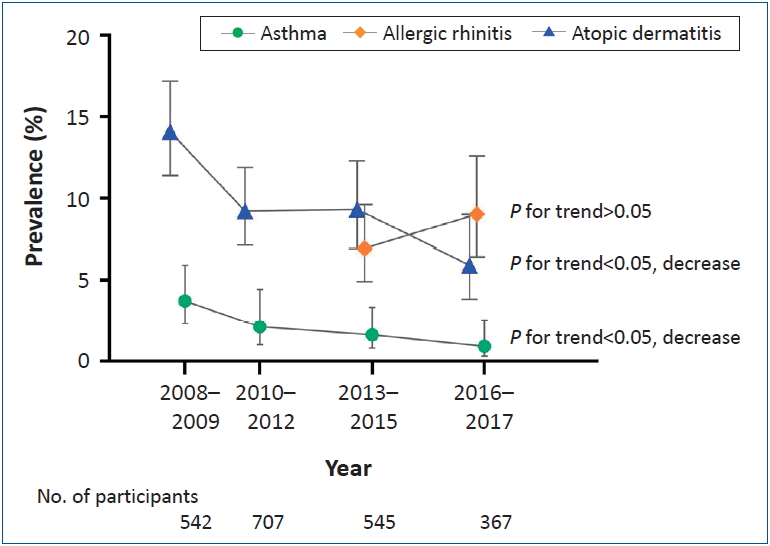
Background: Major questions remain regarding the agestratified trends of allergic diseases and asthma in Korea.
Purpose: To identify the estimated recent prevalence and 10- year trends in asthma, allergic rhinitis, and atopic dermatitis among the Korean population from 2008 to 2017. Methods: This nationwide cross-sectional survey (Korean National Health and Nutrition Examination Survey) over 10 years (2008–2017) examined representative samples of the...
- Common features of atopic dermatitis with hypoproteinemia
- So Yoon Jo, Chan-Ho Lee, Woo-Jin Jung, Sung-Won Kim, Yoon-Ha Hwang
- Clin Exp Pediatr. 2018;61(11):348-354. Published online September 16, 2018
-
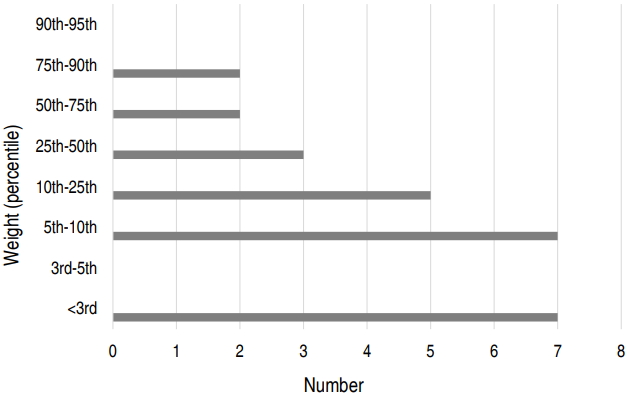
Purpose: The purpose of this study was to identify the causes, symptoms, and complications of hypoproteinemia to prevent hypoproteinemia and provide appropriate treatment to children with atopic dermatitis. Methods: Children diagnosed with atopic dermatitis with hypoproteinemia and/or hypoalbuminemia were retrospectively reviewed. The patients’ medical records, including family history, weight, symptoms, treatment, complications, and laboratory test results for allergies and skin cultures,...
- Case Report
- Allergy
- Breast abscess caused by
Staphylococcus aureus in 2 adolescent girls with atopic dermatitis - Sung Man Park, Won Sik Choi, YoonSun Yoon, Gee Hae Jung, Chang Kyu Lee, So Hyun Ahn, Yoon Wonsuck, Young Yoo
- Clin Exp Pediatr. 2018;61(6):200-204. Published online June 25, 2018
-
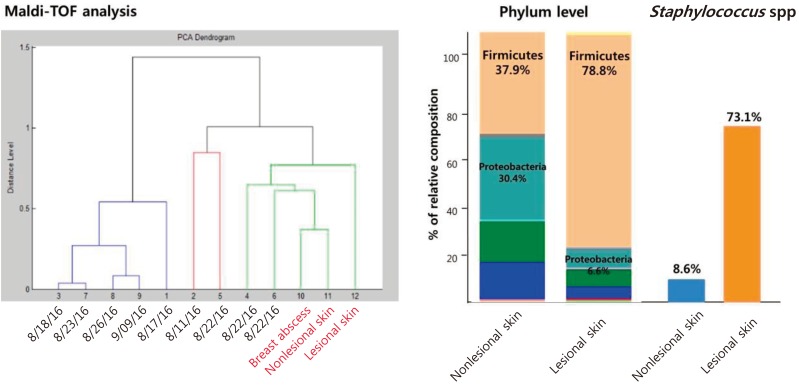
Atopic dermatitis (AD) is a chronic inflammatory skin disease in children. Patients with AD experience a high rate of colonization of the skin surface by
Staphylococcus aureus . Because of a skin barrier defect, there is a potential risk of staphylococcal invasive infection in patients with AD. Here, we present 2 cases of breast abscess caused byS. aureus in 2...
- Review Article
- Allergy
- Impact of perinatal environmental tobacco smoke on the development of childhood allergic diseases
- Hyeon-Jong Yang
- Clin Exp Pediatr. 2016;59(8):319-327. Published online August 24, 2016
-
Allergic diseases such as asthma, allergic rhinitis, atopic dermatitis, and food allergy, are most common chronic, noncommunicable diseases in childhood. In the past few decades, the prevalence has increased abruptly worldwide. There are 2 possible explanations for the rising prevalence of allergic diseases worldwide, that an increased disease-awareness of physician, patient, or caregivers, and an abrupt exposure to unknown hazards....
- Original Article
- Allergy
- The relationships among birth season, sunlight exposure during infancy, and allergic disease
- Jung Min Hwang, Se Hyun Oh, Mee Yong Shin
- Clin Exp Pediatr. 2016;59(5):218-225. Published online May 31, 2016
-
Purpose The recent increase in the prevalence of allergic diseases is hypothetically attributed to immune dysregulation in turn caused by a reduction in exposure to sunlight. We explored relationships between birth season, sunlight exposure, exercise duration, and an allergic disease.
Methods We performed a questionnaire-based survey on allergic diseases among elementary school students. Birth time was categorized according to the season (summer and...
- Relationship between serum 25-hydroxyvitamin D and interleukin-31 levels, and the severity of atopic dermatitis in children
- Bo Ram Cheon, Jeong Eun Shin, Yun Ji Kim, Jae Won Shim, Deok Soo Kim, Hye Lim Jung, Moon Soo Park, Jung Yeon Shim
- Clin Exp Pediatr. 2015;58(3):96-101. Published online March 20, 2015
-
Purpose Atopic dermatitis (AD) is a chronic inflammatory relapsing skin disorder. Vitamin D plays a pivotal role in the development of AD, and interleukin (IL) 31 is known to be related to pruritus in AD. The aim of our study was to determine whether 25-hydroxyvitamin D (25(OH)D) levels are related to IL-31 levels or to the severity of AD.
Methods We enrolled 91...
- Review Article
- Effects of probiotics on the prevention of atopic dermatitis
- Nam Yeun Kim, Geun Eog Ji
- Clin Exp Pediatr. 2012;55(6):193-201. Published online June 21, 2012
-
Atopic dermatitis (AD) is an immune disorder that is becoming increasingly prevalent throughout the world. The exact etiology of AD remains unknown, and a cure for AD is not currently available. The hypothesis that appropriate early microbial stimulation contributes to the establishment of a balanced immune system in terms of T helper type Th1, Th2, and regulatory T cell (Treg)...
- Original Article
- A study of the frequency and characteristics of minor clinical manifestations in children with atopic dermatitis
- Ji Eun Cho, You Hoon Jeon, Hyeon Jong Yang, Bok Yang Pyun
- Clin Exp Pediatr. 2009;52(7):818-823. Published online July 15, 2009
-
Purpose : We aimed to evaluate the frequency and characteristics of minor clinical manifestations of atopic dermatitis (AD) in Korean children to aid the diagnosis and treatment of AD. Methods : From April 2007 to December 2007, we enrolled 106 children (aged 1 month [infants] to 15 years) diagnosed with AD at the Pediatric Allergy Respiratory Center in Soonchunhyang University Hospital.... -
- Review Article
- The prevalences of asthma and allergic diseases in Korean children
- Soo-Jong Hong, Kang-Mo Ahn, Soo-Young Lee, Kyu-Earn Kim
- Clin Exp Pediatr. 2008;51(4):343-350. Published online April 15, 2008
-
Asthma and allergic diseases are one of the most common disorders in children. Due to its increased prevalence, as well as the increased morbidity and mortality from these diseases, asthma and allergic diseases have come to be recognized as a major worldwide public health issue. In addition, socioeconomic burden of asthma and allergic diseases has increased in Korea also. The... -
- Case Report
- A case of acquired acrodermatitis enteropathica with a normal serum zinc level but a low level in the hair
- Kyung Il Oh, Jung Hee Kim, Ji Eun Lee, Dae Hyun Lim, Byong Kwan Son
- Clin Exp Pediatr. 2007;50(2):209-212. Published online February 15, 2007
-
Acrodermatitis enteropathica (AE) is a rare autosomal recessive disorder of early infancy, and is characterized by periorificial dermatitis, alopecia, and intractable diarrhea. Serum zinc levels are usually low in untreated patients and the oral administration of zinc sulfate can clear skin lesions and other symptoms. Although premature and cow`s milk-fed infants are at particular risk of developing AE, there have... -
- Review Article
- Atopic dermatitis
- Bok Yang Pyun
- Clin Exp Pediatr. 2006;49(6):589-592. Published online June 15, 2006
-
Atopic dermatitis is estimated to affect 15-20% of the childhood population and there id considerable evidence that the prevalence is increasing. But it is frequently under diagnosed and inappropriately treated yet. Atopic dermatitis can have a large social;. emotional and financial effect on the child and their family. Atopic dermatitis also commonly predated the development of asthma and allergic rhinitis.... -
- Original Article
- Polymorphisms of the CTLA-4 promoter(-318) and exon 1(+49) genes with atopic dermatitis in Korean children
- Tae Won Song, Hea Sun Yang, Kyung Eun Lee, Kyung Won Kim, Eun Soo Kim, Myung Hyun Sohn, Kyu-Earn Kim, M.D
- Clin Exp Pediatr. 2006;49(5):545-551. Published online May 15, 2006
-
Purpose : The gene-encoding cytotoxic T lymphocyte-associated antigen-4(CTLA-4) is one of the candidate genes for conferring susceptibility to atopic dermatitis(AD). The aim of the study was to investigate the association between Korean children with AD and the polymorphisms of CTLA-4 gene promoter(-318) and exon 1(+49). Methods : The CTLA-4 promoter(-318 T/C) and exon 1(+49 A/G) polymorphisms were genotyped via restriction fragment... -
- Case Report
- A Case of Maple Syrup Urine Disease Associated with Acrodermatitis Enteropathica-like Syndrome Due to Iisoleucine Deficinecy During Diet Therapy
- Ki Hyang Moon, Oh Sook Gwon, Jung Im Lee, Seong Woo Rho, Seong Sook Jeon, Son Sang Seo
- Clin Exp Pediatr. 2001;44(4):469-474. Published online April 15, 2001
-
Maple syrup urine disease(MSUD) is an autosomal recessive disorder involving the metabolism of the branched-chain amino acids(BCAA) such as leucine, isoleucine and valine. The disorder is due to a defect in branched-chain α-ketoacid dehydrogenase(BCKAD) and the classic form causes rapid progressive and overwhelming illness beginning in the first weeks of life, present with poor feeding, lethargy, change in muscle tone,... -
- Original Article
- Thymopentin Therapy in Atopic Dermatitis
- Geun Woong Noh, Ki Young Lee
- Clin Exp Pediatr. 1998;41(9):1268-1272. Published online September 15, 1998
-
Purpose : Atopic dermatitis is a chronic relapsing inflammatory skin disease that results from allergic reaction. Steroid therapy has become a major therapeutic modality for treatment of atopic dermatitis. Several immunomodulatory therapies have been tried for atopic dermatitis. In this study thymopentin therapy was performed and its clinical effects and laboratory results were evaluated. Methods : Atopic dermatitis with typical clinical... -
- Decrease of Plasma Th2 Cytokines by Interferon(IFN) -γ Therapy in Atopic Dermatitis
- Geun Woong Noh, Woo Gill Lee, Dong Hee Cho, Ki Young Lee
- Clin Exp Pediatr. 1998;41(8):1128-1134. Published online August 15, 1998
-
Purpose : Atopic dermatitis is characterized by reduced IFN-γ production and increased IL-4 production. As a result, IgE production increases in atopic dermatitis. In the previous studies, it was reported that recombinant IFN-γ therapy is effective in treatment of severe atopic dermatitis. In this study, changes of plasma IFN-γ, IL-4, IL-5 and IL-10 concentration by IFN-γ therapy were studied in... -
- Transient symptomatic zinc deficiency in a breast-fed, post term infant.
- Jin Bok Hwang, Soon Young Song, Woo Hyun Kwon, Chang Ho Han, Hye Li Chung, Young Dae Kwon
- Clin Exp Pediatr. 1991;34(1):101-106. Published online January 31, 1991
-
Acrdermititis enteropathica is a rare autosomal recessive disorder of zinc absorption and its cardinal symptoms appear at the time of weaning from breast milk which has been referred to as most appropriate formula to prevent and treat this disease. However, recent reports presented Transient Symptomatic Zinc deficiency (TSZD) in infants fed breast milk whom they treated with transitory zinc supplement with no recurrence. We experienced... -
- A Case of Eczema Herpeticum Occurring in Atopic Dermatitis.
- Eun Young Choi, Min Sik Kim, Hey Sun Lee, Young Min Ahn
- Clin Exp Pediatr. 1989;32(5):695-699. Published online May 31, 1989
-
We have experienced an 11-month-old male who had suffered from atopic dermatitis and subsequent eczema herpeticum which was confirmed by Tzank test and successfully treated with Acyclovlr. We report this case with a brief review of related literature. -
- Case Report
- A Case of Leiner's Disease Kee Hyuck.
- K H Kim, Ran Nam Gung, Chul Lee, Dong Kwan Han, Yoon Kee Park
- Clin Exp Pediatr. 1986;29(8):902-906. Published online August 31, 1986
-
We have experienced a case of Leiner’s disease characterized by generalized seborrheic dermatitis, intractable, severe diarrhea, marked wasting, and recurrent local and systemic infections. We are reporting this case with brief review of literatures. -
- Four Cases of Gianotti-Crosti Syndrome.
- Yong Gab Kwon, Ki Sup Chung, Kir Yong Kim
- Clin Exp Pediatr. 1984;27(8):820-826. Published online August 31, 1984
-
The Gianotti-Crosti syndrome, papular acrodermatitis of childhood(PAC), is an infrequently recognized disorder with distinctive characteristics. At present hepatitis B virus is thought to be an etiologic gent. The disease is very rare in Korea, in spite of the high frequency of hepatitis B surface antigen(HBsAg) in the general population. It is known that subtype ayw of the HBsAg may influence... -
- Original Article
- HLA Type in Bronchial Asthma and Atopic Dermatitis.
- Ji Yoon Chung, Myung Sook Kim, Jung Ju Kim, Dong Hak Shin
- Clin Exp Pediatr. 1982;25(5):460-466. Published online May 31, 1982
-
Since the histocompatibility was discovered, we have studied and determined many HLA types till the last workshop held in Los Angeles, USA, 1980. Nowadays we apply HLA types to organ transplantation, transfusion of blood, identification of paternity, study of ethnology and diagnosis of a specific disease. In the present study, 20 cases of bronchial asthma and 15 atopic dermatitis patients... -
-

-
-

-

-
Impact Factor4.2
-
6.52022CiteScore92nd percentilePowered by







